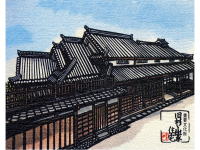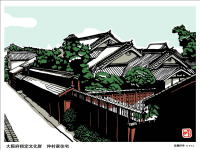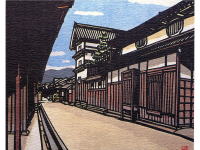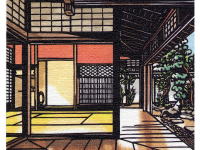富田林寺内町の探訪
I'm glad to intorduce an old town, Jinaimachi, Tondabayashi, Osaka, Japan as a national historic district and heritage site.
It takes 30 minutes from Osaka city to Tondabayashi station by Kintetsu railways. A 10-minutes walk will take you to the historic town.
ギャラリー
welcome to jinaimachi town, tondabayashi, a historic district, japan
| 【Tourist guide to Jinaimachi town, Tondabayashi, a historic district and heritage site of Japan,Travelogues by Author - Series Vol. 61 Bilingual guided tour on November 3, 2018】 | ||||
| November 3rd, 2018 (Saturday· Culture Day) On November 3rd, 2018, the last Culture Day of the Heisei era, a refreshing clear autumn sky, which lasted all day, was just appropriate for our guide excursion tour. The special guiding tour for foreign visitors, following the one we had last autumn, was planned and offered by the Tondabayashi City Tourism Promotion Association. The seven participants who had applied for a prior reservation and the seven staff members gathered in front of the south exit of Tondabayashi station (Kintetsu Railways) at 9:50 a.m.. The participants included five foreign exchange students from Indonesia, who are studying at the Momoyama Gakuin University (Izumi City, Osaka Prefecture) and two Japanese, who are living in Osaka Prefecture. The foreign students applied for the tour because of a leaflet they found at the international center of their university. |
||||
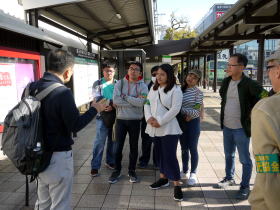 |
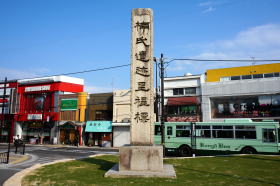 The milestone to the memorial places of the Kusunoki clan in south Kawachi region at Tondabayashi station |
|||
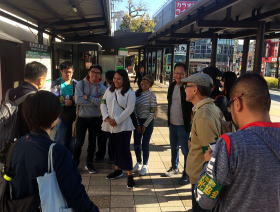 |
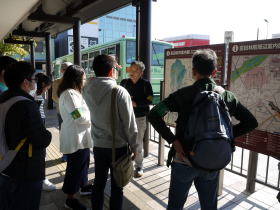 |
|||
| To reach our first destination we took the public transportation of ‚Kongo Bus’ from Tondabayashi station for ‚Nanpian Kannonji Buddhist Temple’ in the southeast of Tondabayashi City. This temple is one of the old ruins
related to the Kusunoki clan in the medieval period. The ‚Kongo Bus’ has usually a lot of vacant seats on the not so populate routes, however
on that day the seats were occupied. On both sides of the route the peaceful
countryside scenery of the South-Kawachi region came into view. There were
rice fields and cosmos flowers in full bloom. |
||||
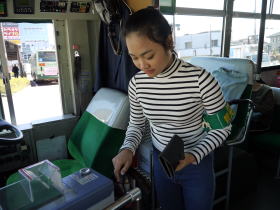 getting on Kongo bus for Yodoshi at Tondabayashi station |
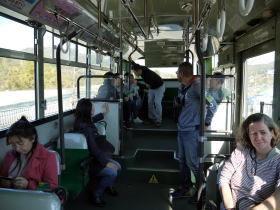 coach cabin |
|||
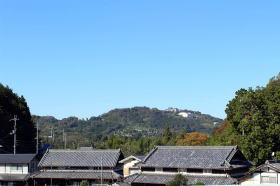 |
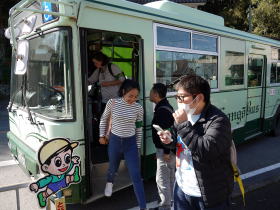 getting off at Kannabi bus stop |
|||
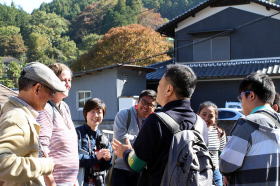 |
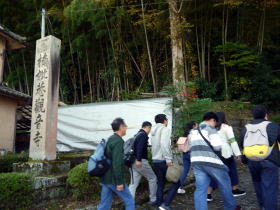 |
|||
| Nanpian Kannonji Buddhist Temple Getting off at Kannabi bus stop and climbing a little up a slope, we reached the main gate of Nanpian Kannonji Buddhist temple in a dense forest. The wife of Kusunoki Masashige lived her later years building a small pavilion after his death and her cemetery remains here. During the Taisho era (1912-1926), the existing buildings of Nanpian Kannonji temple including the Kannon Pavilion were rebuilt to commemorate his great achievements. The clan of Kusunoki Masashige, who was called Great Nanko, ruled the south Kawachi region around the 13th century, so there still remain such ruins as mountain castles and battle fields in the southeastern part of Tondabayashi city and Chihaya-Akasaka village. |
||||
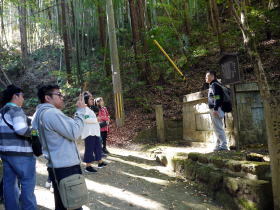 the statue of Nanko's wife and her son |
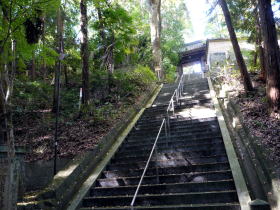 stone stairs in front of main gate |
|||
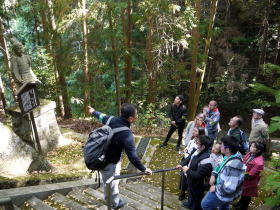 the statue of Kusunoki Masashige besides the gate |
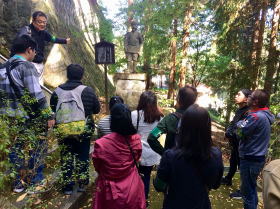 the statue of Kusunoki Masashige besides the gate |
|||
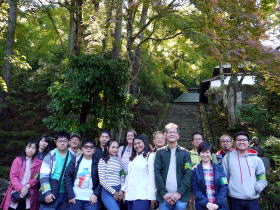 group photo |
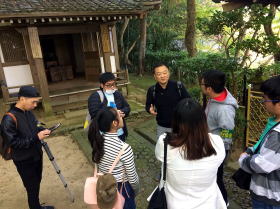 Kannondo pavilion |
|||
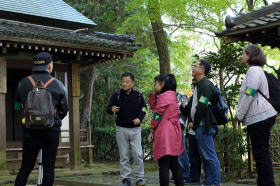 Kannondo pavilion |
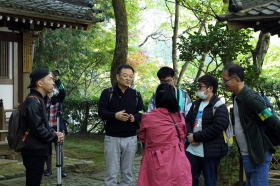 |
|||
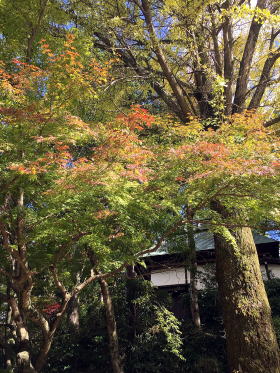 |
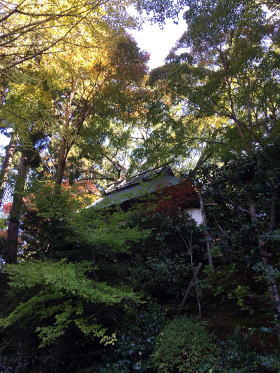 |
|||
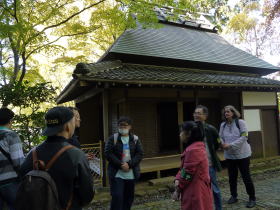 souan pavilion |
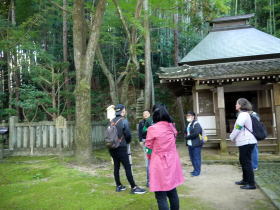 the cemetery of Nanko's wife (left), the camphor tree planted by Showa Emperor(center), Kannondo pavilion (right) |
|||
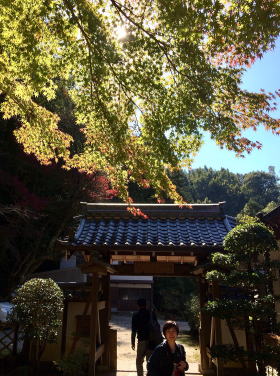 |
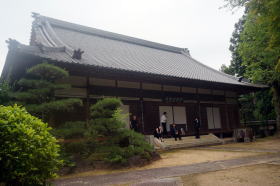 main hall |
|||
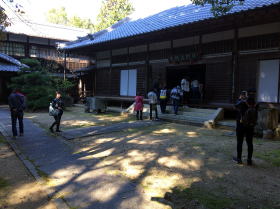 main hall |
||||
| Kusunoki Masashige- Great Kanko
As for the fact that the clan of Kusunoki Masashige was loyal to the Emperor
Godaigo, some episodes of Great Nanko had been taken up to the textbook
of elementary and junior high schools before World War II and were sung
as an elementary school song under the influence of militaristic education.
A bronze statue of Great Nanko riding a horse was made in 1891 and was
placed towards the direction of Nijyu-Bashi bridge at the Imperial Palace
in Tokyo. |
||||
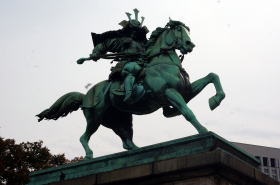 the statue of Kusunoki Masashige (Great Nanko) at the Imperial Palace in Tokyo |
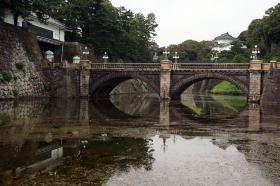 Nijyu-bashi bridge at the Imperial Palace |
|||
| Lunch time In such swell of history, Nanpian Kannonji temple shows a quiet appearance, praying for the repose of the souls of the Kusunoki clan. The precinct of the temple has mossed stone stairway and trees around the halls. The green leaves have now started to change colors. After the guide presentation we enjoyed catered food in the hall of Nanpi Kaikan for lunch. ・Grilled fish: Salmon ・Food boiled and seasoned: Bamboo shoot ・Omelet・ Vegetable salad with pounded sesame dressing of the okura ・Sashimi: Tuna, kanpachi (great amberjack) ・Tempura: Green shiso leaf, prawns, sweet potato, lotus root and sweet green pepper ・Rice ・Pickles: Chopping fine pickles, pickled plum ・Miso soup: Leek, seaweed, grated yam |
||||
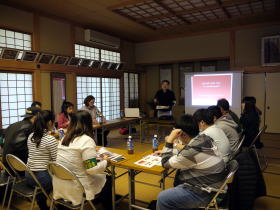 guide tour presentation |
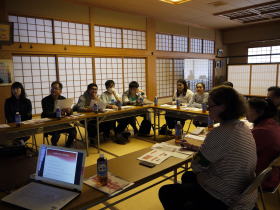 |
|||
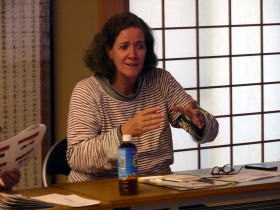 |
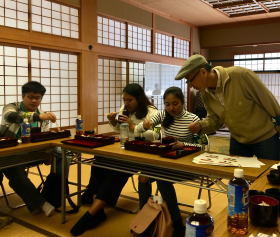 |
|||
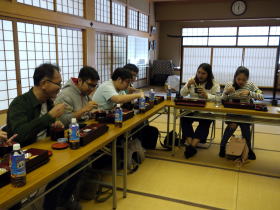 |
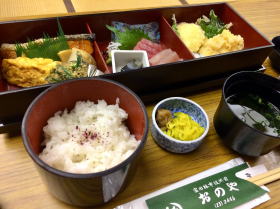 the catered lunch box |
|||
| Walking around Jinaimachi historic district After lunch, the party came back to Tondabayashi station by bus and took a walk around the historic district of Tondabayashi’s tempeltown called ‚Jinaimachi’. |
||||
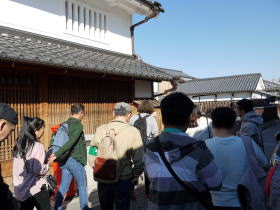 |
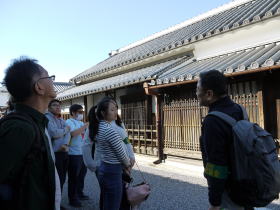 |
|||
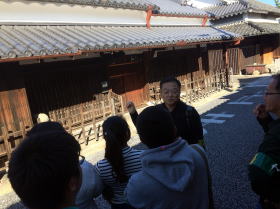 |
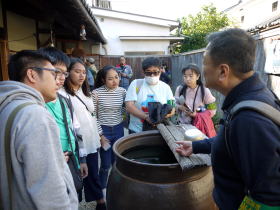 Coffee Shop Heizo |
|||
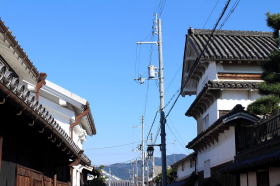 |
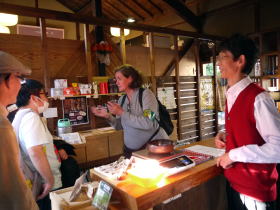 Coffee Shop Heizo |
|||
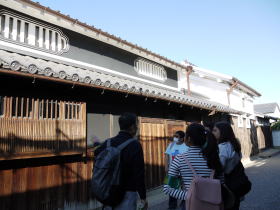 The Kuzuhara's residence |
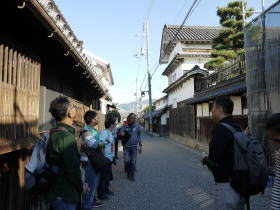 The (south) Kuzuhara's residence |
|||
| Koibumi Yakushi We dropped in at Yakushido Buddhist small pavilion where the statue of Yakushi Nyorai is enshrined. The statue is called Koibumi Yakushi and has a romantic legend. It is said to be made of plaster and papers of young men’s and women’s love letters, a long time ago. ‚Koibumi’ means ‚love letter’. Omamori, a lucky charm and Omikuji, a fortune slip associated with the koibumi legend, are sold at that site. We had omikuji or fortune slips prepared for every participant, translated in English. They stood still in front of Yakushido for a while, read the fortune of omikuji with English translation seriously and showed them to each other. There was a great deal of excitement. |
||||
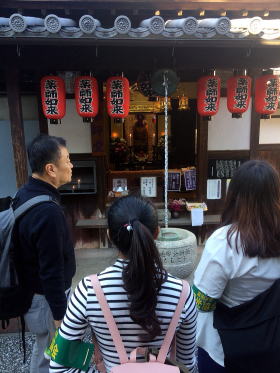 Yakushido-Koibumi Yakushi |
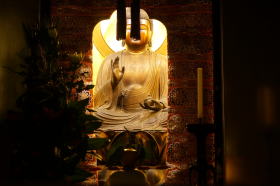 Yakushido-Koibumi Yakushi |
|||
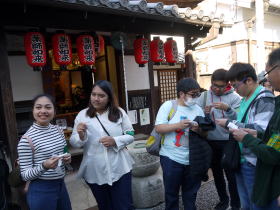 |
||||
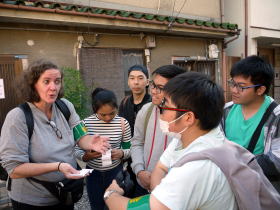 |
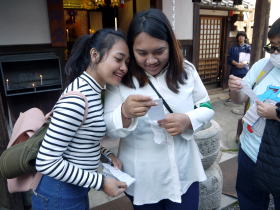 Foreign students who read seriously the fortune of omikuji with English translation |
|||
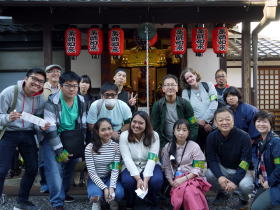 group photo at the Yakushido pavilion |
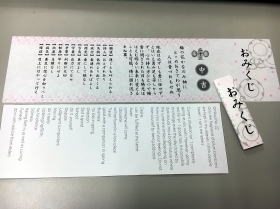 the fortune of omikuji with English translation - Yakushido pavilion |
|||
| The panoramic view of the Kongo Katsuragi Mountains and Ishikawa River Walking to the Jinaimachi viewing terrace and enjoying the panoramic view of the Kongo Katsuragi mountains and Ishikawa river, we finished the guide tour. A cake present was also offered to each participant. The cake is named ‚Crème Ganache‘ with the Koibumi Legend package, which is specially produced and sold by a local patisserie of the cake shop YAMAO in front of Tondabayashi station. It is a good souvenir if you visit the historic district of Tondabayashi Jinaimachi. |
||||
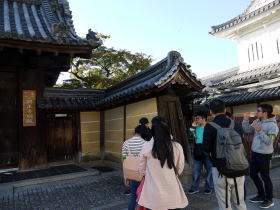 Koushouji Betsuin Buddhist temple |
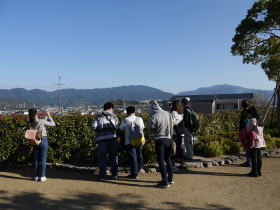 Jinaimachi viewing terrace(Katasuragi、Kongo mountains) |
|||
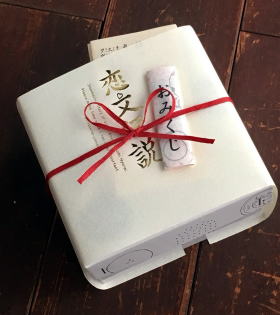 "Koibumi Legend" - the special package of the" Creme Ganache" with a Omikuji fortune slip of Yakushido-Koibumi Yakushi |
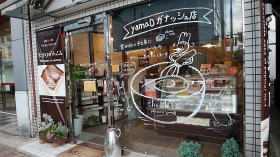 Cake shop YAMAO opened in front of Tondabayashi station |
|||
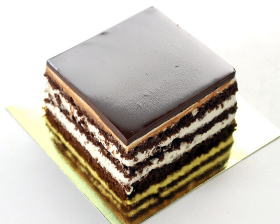 " Creme Ganache" - the most polular cake of the shop |
||||
| Thanks to a lot of people's support and cooperation, we finished the special
tour guided tour without fail. I think that everyone who participated enjoyed
the rustic charm of Tondabayashi Jinaimachi Town, the beauty of the autumn
and the taste of the autumn. If you may have a chance, please visit Tondabayashi
Jinaimachi Town again. Thank you for your participation and cooperation.
Naoya Okutani Government licensed interpreter tour guide and Jinaimachi volunteer tour guide |
||||
| Tourrists' attractions (Part 1/2) | ||||
| Tourrists' attractions (Part 2/2) | ||||
|
||||
| Shops information - Food, Beverage,Guest House, Accessary & Handycrafts and Massage | ||||
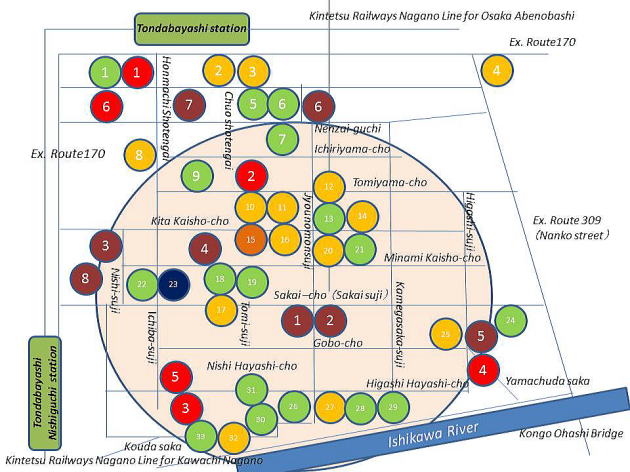 |
||||
| |
||||
Information
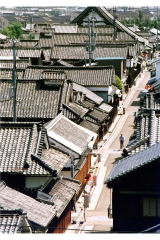
Jinaimachi in Tondabayashi(Jyounomon-suji street)
Photo: provided by Tondabayashi Municipality, unauthorized copying and
replication are strictly prohibited.
National conservation district of valuable traditional buildings
Jinaimachi town, a part of Tondabayashi-cho located in Tonadabayashi city
has been chosen as a national conservation district of valuable traditional
buildings since 1997, which is only selected in Osaka Prefecture. Among
approximately 500 buildings in the town, 181 buildings built during the
period from the Edo era to the early Showa era have been identified as
traditional buildings.
An application for prior approval to the section of cultural properties
in board of education of Tondabayashi city is required when any change
of current exterior appearances viewed from a street in the conservation
district such as enlargement, renovation, repair, redecoration, change
of the color, new construction and demolition of any buildings is to be
made. After repairing works for the conservation of the exterior appearances,
the reconstruction and face-lifting in consideration of landscaping, a
white wall, a board fence, and a lattice door of traditional house remain
as used to be, and rustic and calm atmosphere has been kept as people still
live in those houses.
The signpost is provided with main traditional residences to explain each
origin and history, and those guiding signposts cum street lights have
been placed along the streets of stone-pavement.
In addition, the appearances of newly built buildings are also harmonized
with the neighboring historic district in consideration for the traditional
townscape in Jinaimachi town.
Location
Jinaimachi town, Tondabayashi city, a national historic preservation district
and heritage site of Japan, which is located in the south-eastern part
of Osaka prefecture, the western part of Japan
Directions to Jinaimachi town, Tondabayashi
It is a 10-minute walk from Tondabayashi Staion or the Tondabayashi Nishiguchi Station of Kintetsu Nagano line.
From Kansai International Airport
Airport Limousine Bus service available bound for Kawachi Nagano Station.
(60 minutes) Please take Kintetsu railways from Kawachi Nagano to Tondabayashi.(15
minutes)
From Osaka International Airport (Itami Airport)
Airport Limousine Bus service available bound for Abenobashi Station. (30
minutes) Please take Kintetsu railways from Abenobashi terminal to Tondabayashi.(30 munites)
From JR Shinkasen Shin-Osaka station or
Osaka (Umeda) station
Please take Subway Midousuji line from Shin-Osaka station or Osaka (Umeda)
station to Tennoji Station. (20~30 minutes) Please change trains at Tennoji
and take Kintetsu railways from Abenobashi terminal to Tondabayashi. (30
minutes)
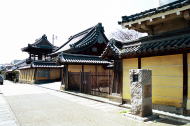
Koushouji Betsuin Temple (Tondabayashi Gobo)
Koushouji Betsuin Temple is a temple of Jodo Shinshu School (Ikkoushuu School),
which became the center of the development and establishment of Jinaimachi
town in Tondabayashi . It has been popular as Mr. Gobo (Tondabayashi Gobo)
among the local residents.
During the Ouei period (1394-1412years) , the
The temple gate looks toward the east and the Jyounomon-suji street. Those buildings such as the bell tower, the drum tower, the main hall,
the reception hall and priest's quarters are set up and arranged.
The main gate has refined style and it became clear in a recent investigation
that the gate was further relocated from Koushouji temple in Kyoto, which
was originally said to be dismantled and reconstructed from one of the
gates at Fushimi castle in Kyoto.
Koushouji Betsuin Temple was designated as an important cultural property
of the country in 2014.
The site-seeing map available in English
Please stop by to the Tourist Information Cetnter or Jinaimachi Visitor Center.
Restrooms
Available at Jinaimachi Visitor Center (Jinaimachi Kouryuukan), Jinaimachi Center and Jinaimachi Tenbou Hiroba (Viewing Terrace)
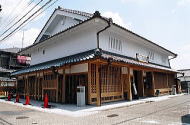
Visitor Center
(Jinaimachi Kouryuukan,
Town Community Center)
Address
9-29, Tondabayashi-cho, Tondabayashi city, Osaka, 584-0033, Japan
TEL.+81-(0)721-26-0110
FAX.+81-(0)721-26-0110
open 10a.m. until 5 p.m.
closed on Monday
Visitor Parking
Road width is very narrow in Jinaimachi town. If traveling by car, please
use Tondabayashi Municipal east parking newly opened in February 2014 (Toll
parking).
You can park the minibus for groups and passenger cars for general use.
Only one parking lot available for minibus, you must book it in advance
with Tondabayashi City Hall. A 15-minute walk to the Jinaimachi Visitor
Center and 5 minute walk up to the former Sugiyama family house, an important
national cultural property.
You will note that you will contact Tondabayashi Municipality Office for
a parking lot of large tourist bus for groups. Thank you in advance for
your kind cooperation.
